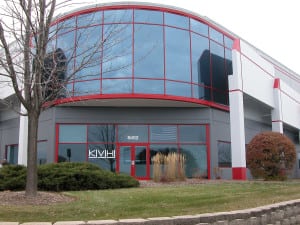KVH CEO Hints at Interest in New HTS Capacity
[Via Satellite 01-16-2015] KVH Industries is hopeful that new High Throughput Satellite (HTS) systems coming online in 2015 will bring additional capacity for maritime applications, KVH President and CEO Martin Kits van Heyningen said Jan. 14 at the Needham Growth Conference in New York City. The company has seen a significant increase in revenues from its VSAT business for ships, growing from slightly more than $15 million to nearly $80 million in five years time. With the demand for bandwidth continuing to increase, Kits van Heyningen highlighted new upcoming sources of capacity that could be beneficial to KVH’s maritime services.
“We’ve got some new satellites coming out in 2015, particularly satellites like Intelsat’s new EPIC constellation which we think is pretty attractive, and our partner ViaSat is launching ViaSat 2 … so [there is] lots of new technology coming out that will keep our speeds higher and our costs lower.”
KVH’s business has shifted heavily toward services over hardware the past few years. Revenues from services have nearly doubled from 34 percent in 2012 to 62 percent in its most recent third quarter, according to Peter Rendall chief financial officer of KVH. Multi-year subscriptions are fueling perennial demand for bandwidth.
“We’ve built out a global broadband network. We have 16 satellites that we lease transponders on. We have 23 transponders now; we cover the entire marine market,” said Kits van Heyningen.
He added that new capacity could lead to faster speeds for maritime services. KVH currently provides speeds of up to 4 Mbps, which is a step up compared to typical maritime speeds of less than 1 Mbps, according to Kits van Heyningen. While the focus for KVH customers is typically quantity over speed, the continued ramp-up in demand coupled with improved satellite technology could result in improvements.
“We see bandwidth getting cheaper over time,” Kits van Heyningen explained. “Speeds are going up and costs are going down over time and we are able to offer higher speeds as we go because satellites are improving, technology is improving and that’s a competitive market as well. So when ViaSat launches a Ka-band satellite in North America that’s very efficient, that frees up capacity on Ku-band satellites that can be repurposed for things like maritime.”
Last year KVH delivered 500 terabytes of data and 25 million minutes of voice to ships and seafaring vessels around the world. Through the company’s IP MobileCast service the company has sped up the delivery of large files that previously were distributed manually using DVDs. For example, KVH multicast an Ebola training video for people traveling to and around West Africa, accelerating the dissemination of information on how to avoid spreading the disease. Another first was broadcasting the World Cup.
“We broadcast the finals while they were going on. Our broadcast was going out so people all over the world were able to see that in the middle of the ocean, which sounds like not a big deal, but this has never been done before,” said Kits van Heyningen.
New regulatory requirements for Internet access and laws mandating electronic charts, training and reporting are contributing to the need in a market that is just now beginning to hit its stride, according to Kits van Heyningen. While the lack of IT personnel on vessels can present a challenge, KVH sees a large addressable market that it will continue to tap.
“Bandwidth requirements are increasing exponentially. This is not news in any other industry, but in maritime industry it’s really just taking off now,” he said
